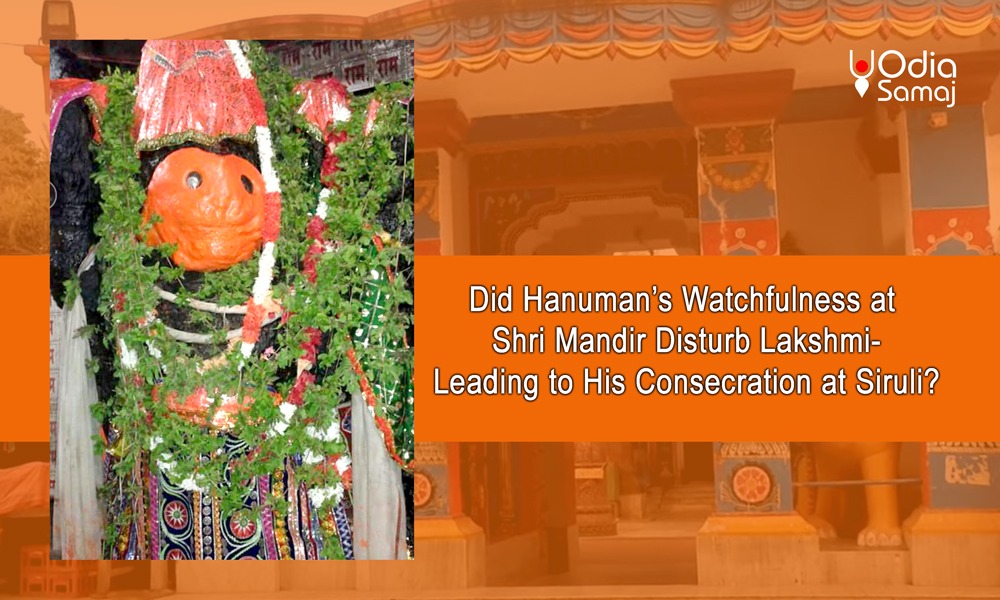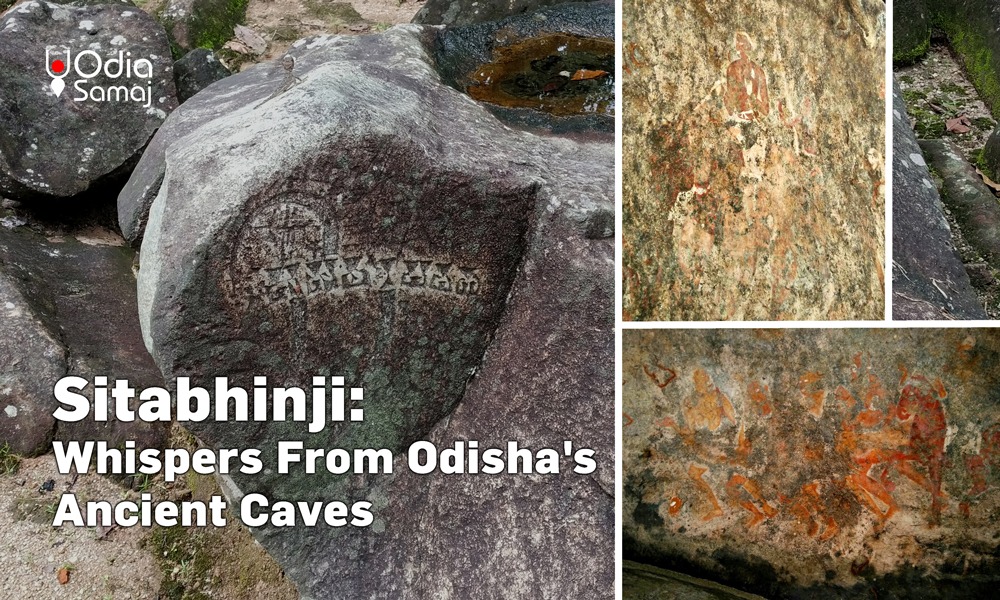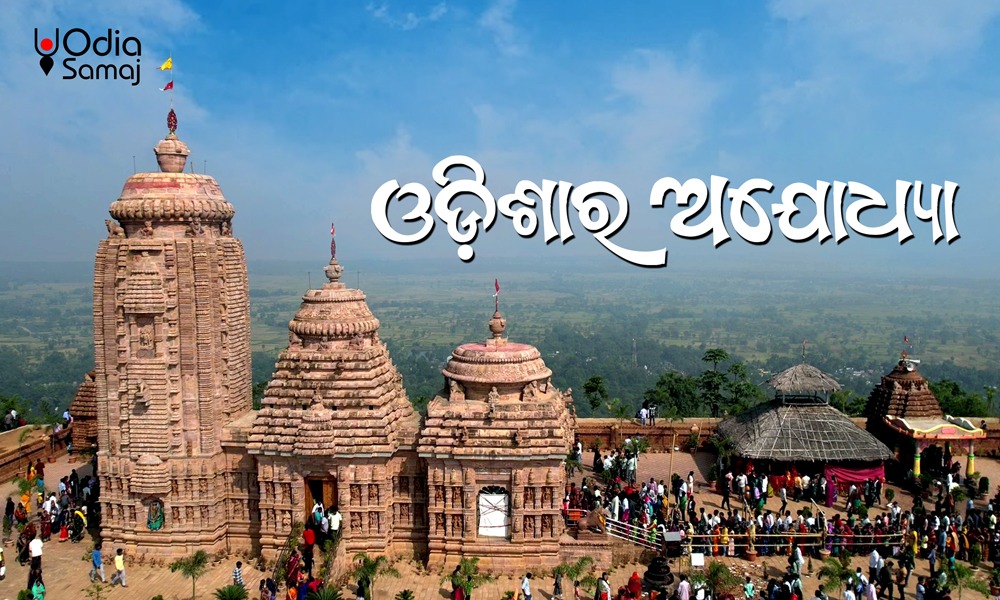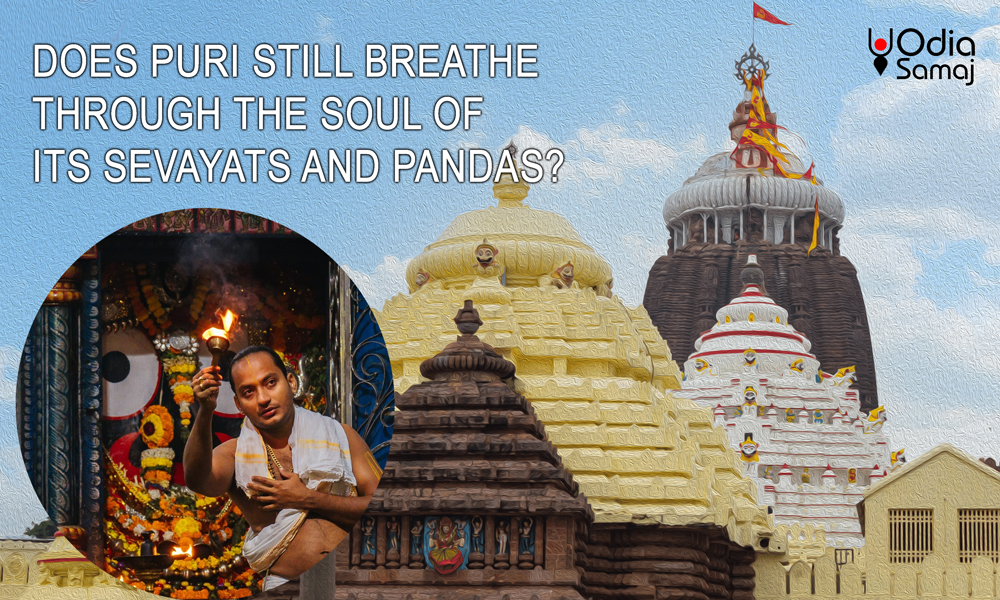From Vigil to Veneration: Hanuman’s Journey to Siruli

From the Sanctum to the Silence: A Divine Departure
A tale retold in hushed reverence across Odisha speaks of
Lord Jagannath—the presiding deity of Puri’s sacred Shri Mandir—once assigning
Hanuman the solemn duty of guarding the temple. But Hanuman, in his zealous
devotion, is said to have disturbed Goddess Lakshmi with his thunderous breaths
and tireless vigil. To restore peace, Jagannath requested him to watch over
from a distance.
That "little distance" became a sacred stretch of 33 kilometres
northeast, now known as Siruli. But Hanuman didn’t retreat; he simply
repositioned—eyes forever fixed on Jagannath’s Neela Chakra, while his gaze
also pierces the south toward Lanka. This is not abandonment. This is eternal
vigilance, from afar.
Who
Built This Sanctuary of Watchful Grace?
What quiet longing turns silence into sanctuary — where every breath
feels held, not by air, but by the divine itself?
Anangabhima Deva III—a ruler guided not by power, but by profound
purpose—built this sacred temple in Siruli in the 13th century. With hands led
by faith, he created not a monument, but a living promise to Lord Hanuman, the
eternal guardian. Here, Hanuman doesn’t merely reside; he watches—his gaze
unwavering, forever fixed upon the distant temple of Jagannath. And in that
silent gaze, generations have found protection, hope, and something greater
than themselves.
This isn’t just architecture; it’s presence. A pulse of divine watchfulness
that refuses to fade. Step into this hallowed space and you’ll feel it—not in
the stone, but in the stillness. The kind of stillness that has listened to
countless prayers, carried the weight of unspoken wishes, and wrapped every
soul that entered with the comfort of being seen—truly seen. Siruli Mahavir is
not just a temple. It is faith, made eternal.
Finding Siruli: The Stillness Between Highways
Siruli Mahavir Temple is nestled off NH-316, about 33 km from Puri and 75 km
from Bhubaneswar. It lies 22 km from Puri Railway Station and 21 km from the
Bus Stand, accessible yet untouched by the chaos of urban pilgrimage centres.
Entry is free, but the devotion it draws is priceless.
Visitors seeking quiet reflection often arrive at dawn, when the temple awakens
with soft chants and the first light graces Hanuman’s watchful eyes.
A Temple in Layers:
The Fourfold Heart of Siruli
Raised on a modest 2-foot platform,
the temple unfolds into four primary mandapas:
· Vimana (Sanctum Tower): A 25-foot Pidha Deula structure with five traditional tiers at the base wall section, yet minimalist in decoration—echoing the humility of Hanuman himself.
· Jagamohana (Assembly Hall): A 20-foot hall bearing lion motifs (parasedha simhas), crowned with kalasa and chakra—symbolising spiritual energy and protection.
· Bhogamandapa (Offering Hall): Home to a wooden image of Jagannath and a Sun God idol, this 40×20 ft space links Vaishnav and solar traditions.
· Natamandapa (Dance Pavilion): A later addition supported by ten stone pillars, now a space for bhajans and communal worship under the gaze of time-worn carvings.
The entire structure is encircled by a 10-foot wall, with Navagraha (nine planetary deities) above the south gate in lotus pose—a quiet nod to ancient cosmology.
From the story of Hanuman’s eternal vigil, we now turn to the temple’s very stones—a testament carved in faith and craftsmanship.
The Idol That Watches Both Worlds
At the heart of the temple stands a magnificent 10-foot monolithic idol of Hanuman, expertly carved from black chlorite with remarkable detail. In one hand, he firmly holds a dagger, while the other supports the Gandha-Mardana mountain, symbolising his strength and devotion. Beside the pedestal, on its right side, is a delicately sculpted figure of his mother, Anjana, honouring her vital role in his life.
Crowning the idol above is a Shiva Linga entwined by a seven-hooded serpent, beautifully blending Shaivite and Vaishnavite traditions. Most striking of all are Hanuman’s eyes—his left fixed unwaveringly on the Neela Chakra of Puri, while his right gaze reaches out towards Lanka—a watchful presence that never falters.
A Bridge of
Offering: Prasad from Jagannath Himself
Every
morning, sacred prasad from Shri Mandir is brought here. With solemn chants and
simple containers of khichdi, coconut sweets and dry fruits, priests receive
the food like royal offerings. Devotees gather before sunrise, knowing that in
these morsels lies a spiritual thread binding Siruli to Jagannath.
During festivals like Ram Navami, Dola Purnima and Hanuman Jayanti, the temple
receives Mahaprasad from Jagannath’s kitchen—including chhappan bhog items such
as chenna poda, puri, dalma and kheer. Shared under open skies, this feast
becomes a community prayer.
When the Village
Dances with Faith
Makar Sankranti: Coconuts, jaggery, and Bela Pana (a
refreshing drink from bael fruit) are offered to Hanuman as winter
wanes—seeking renewal and protection.
Dola Purnima: Hanuman is placed on a palanquin
beneath a centuries-old Peepal tree, swinging to the rhythm of village bhajans
and conches.
Ram Navami: Aarti, mantra, and musical devotion
illuminate the temple, honouring Hanuman’s fidelity to Ram.
Tuesdays are
especially sacred. Devotees chant under saffron flags and stone lions as
incense coils into the Odisha sky.
Craft of the Divine:
Siruli as Heritage
Built with
laterite and sandstone, Siruli Mahavir Temple is more than worship; it is a
living archive of Odisha’s handicraft legacy. The Navagraha reliefs, the lion
guardians, and the tale of a wounded Hanuman tail (allegedly trailing 7 km back
from the village) enrich its folklore.
Siruli
isn’t just part of Odisha’s geography—it lives in its imagination, echoed in
local ballads, whispered through generations of temple lore, and etched in
every fold of village storytelling.
Closing Reflection:
The Temple That Never Turned Away
Siruli
Mahavir Temple is not about grandeur. It is about gaze—Hanuman’s undying gaze.
It is about a story that bends across 33 kilometres, across divine
temperaments, across generations of hands that carved stone and hearts that
believed.
For every
traveller who seeks not just darshan but a dialogue with devotion, Siruli
whispers: He did not leave. He watches still.





